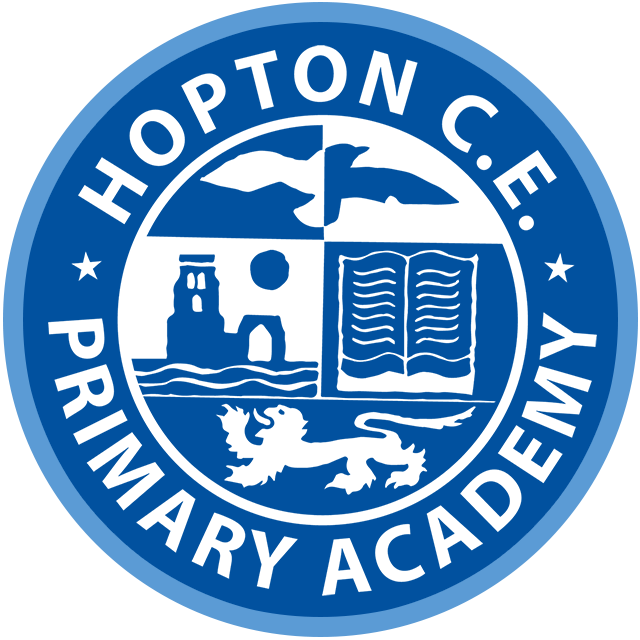Hopton’s Remote Education Provision: Information for Parents
This information is intended to provide clarity and transparency to pupils and parents or carers about what to expect from remote education where national or local restrictions require entire cohorts (or bubbles) to remain at home.
For details of what to expect where individual pupils are self-isolating, please see the final section of this page.
The remote curriculum: what is taught to pupils at home
A pupil’s first day or two of being educated remotely might look different from our standard approach, while we take all necessary actions to prepare for a longer period of remote teaching.
What should my child expect from immediate remote education in the first day or two of pupils being sent home?
| In the first week of remote learning, the learning will be uploaded to the class pages of the website and a weekly overview will be posted to class stories on Class Dojo. There will not be remote teaching this week as teachers will be given time to adequately prepare for remote teaching/learning for the upcoming weeks. |
Following the first few days of remote education, will my child be taught broadly the same curriculum as they would if they were in school?
| We aim to teach most of the curriculum remotely as we do in school wherever possible and appropriate. However, we have needed to make some adaptations in some subjects. For example:Wider curriculum subjects will be woven into English/Guided Reading (such as history, geography)PE activities will be set, but the curriculum will not match that of which we would follow in school due to resource and space restraintsComputing will not be taught discretely as in school due to lack of resources and software availability to all home computers.Art/DT activities will be set but will be modified to be made more accessible with resources found at home. |
Remote teaching and study time each day
How long can I expect work set by the school to take my child each day?
We expect that remote education (including remote teaching and independent work) will take pupils broadly the following number of hours each day:
| Key Stage 1 | On average 3 hours (as per government guidelines) |
| Key Stage 2 | On average 4 hours (as per government guidelines) |
Accessing remote education
How will my child access any online remote education you are providing?
| Reception: will be using Tapestry as the portal for posting remote education (as per normal during the year). This is a platform that parents are used to through the sharing of learning journeys. In addition to this Class Dojo will be used to communicate with parents and reward pupils for their remote learning.Year 1-6: In these year groups we are using Class Dojo as a platform for our remote education. This is where all remote learning updates, links to Google Meets, posting of pupils learning (on their portfolio), rewards for remote learning and communicating between parents and teachers will take place. |
If my child does not have digital or online access at home, how will you support them to access remote education?
| We recognise that some pupils may not have suitable online access at home. We take the following approaches to support those pupils to access remote education:From a survey collecting information on families digital access for remote learning; we have identified which families would benefit from accessing laptops that can be loaned from the school for the time that remote learning is in place. These devices come pre-installed with the software required for home learning. Please phone the office on 01502 730489 to discuss this further. For any further questions linked to digital access, remote learning accessibility or how to submit work on Class Dojo to teachers: Please phone the office on 01502 730489. |
How will my child be taught remotely?
We use a combination of the following approaches to teach pupils remotely:
| All pupils will receive a variety of different types of online lessons:Some examples of these remote teaching approaches are:pre-recorded lessons facilitated by the class (or link) teacherlive teaching (online lessons- via Google Meet)recorded teaching (e.g. White Rose Maths, Oak National Academy lessons, video/audio recordings made by teachers)printed paper packs produced by teachers (e.g. workbooks, worksheets)Set challenges/quizzing via TT Rockstars/Renaissance(Accelerated Reader)commercially available websites supporting the teaching of specific subjects or areas, including video clips, games or sequencesLong term projects/internet research activities |
Engagement and feedback
What are your expectations for my child’s engagement and the support that we as parents and carers should provide at home?
| We expect all children to take part in our remote education offer.However, we do understand the pressure that this can place on parents. We recognise that every family is different, and that many will find remote education a challenge. For this reason, we ask parents to make every reasonable effort to get their children to join in wherever possible.We also ask that parents make every effort to support their child’s learning. This may include sitting with them to complete a task, or being on hand to help with answering questions.We also ask that pupil’s learning is posted on a daily basis (Tapastry-Reception and Class Dojo Portfolios-years 1-6) so teachers can see how pupils are progressing, give feedback and further support pupils in their learning. |
How will you check whether my child is engaging with their work and how will I be informed if there are concerns?
| Our online portals (Tapestry and DoJo) track pupil engagement and the class teacher will be able to see which children are taking part in the work that is offered. We will check in with families using the following system: Step 1The class teacher will phone the parents to discuss home learning if they notice that a child is not engaging and what further support is needed to help pupil engagement with remote learning. This call will be a supportive opportunity to help see if we can solve the problem together.Step 2Pastoral Team will phone parents to discuss any issues around home learning if the class teachers notices that a child is not engaging after initial contact for support with remote learning. This is a supportive opportunity to further identify solutions to barriers with remote learning.Step 3A member of the Senior Leadership Team will contact families who refuse to take part in remote education activities. |
How will you assess my child’s work and progress?
Feedback can take many forms and may not always mean extensive written comments for individual children. For example, whole-class feedback or quizzes marked automatically via digital platforms are also valid and effective methods, amongst many others. Our approach to feeding back on pupil work is as follows:
| Verbal feedback in live sessionsWritten feedback on Tapestry/Class Dojo Portfolio posts of learningWeekly Google Meet Quiz afternoonsEnd of unit quizzing, TT Rockstars (multiplication/division facts), Accelerated Quizzes (reading comprehension) |
Additional support for pupils with particular needs
How will you work with me to help my child who needs additional support from adults at home to access remote education?
We recognise that some pupils, for example some pupils with special educational needs and disabilities (SEND), may not be able to access remote education without support from adults at home. We acknowledge the difficulties this may place on families, and we will work with parents and carers to support those pupils in the following ways:
| We will endeavor to support children who are struggling to complete the remote education offer in the following ways: Live intervention/small group support via Google MeetLive support sessions with a teaching assistant via Google MeetDifferentiated work set by the class teacherPhone calls homeSupport from the SENDCo (please contact the school office)Technical support (school laptops, headphones, software)Access to online resources and platforms |
Remote education for self-isolating pupils
Where individual pupils need to self-isolate but the majority of their peer group remains in school, how remote education is provided will likely differ from the approach for whole groups. This is due to the challenges of teaching pupils both at home and in school.
If my child is not in school because they are self-isolating, how will their remote education differ from the approaches described above?
Once contact with the office has been made to identify a need for self-isolation: class teachers will be informed and will post English, Guided Reading, Maths and a wider curriculum activity each day needed for the self-isolating pupil(s). This will be a reflection of what is being taught in the classroom wherever possible. If further explanation is needed to support a lesson-pre-recorded lessons will be linked in overview. (ie YouTube, BBC, Oak National Academy, etc)
All completed work can be uploaded using Tapestry and Class DoJo so that the teacher can offer feedback.



